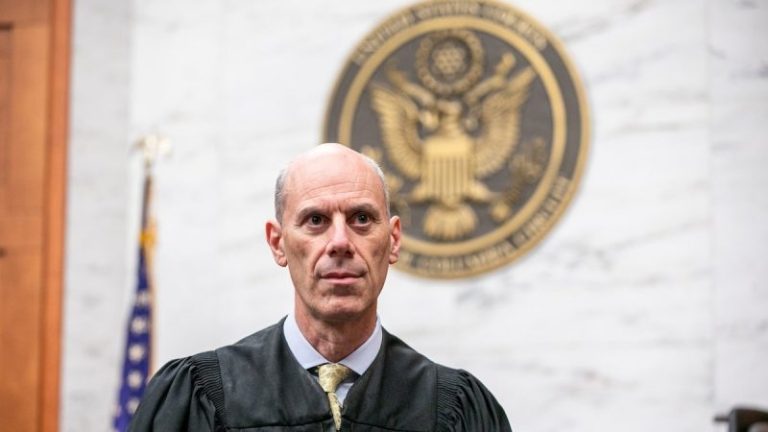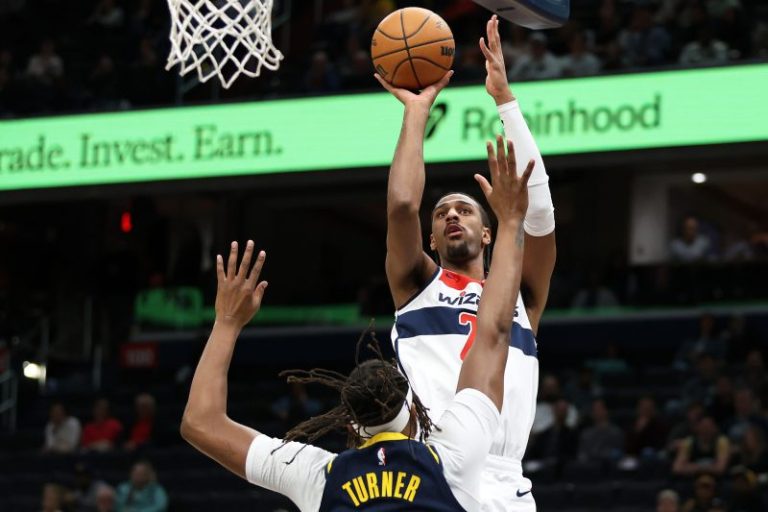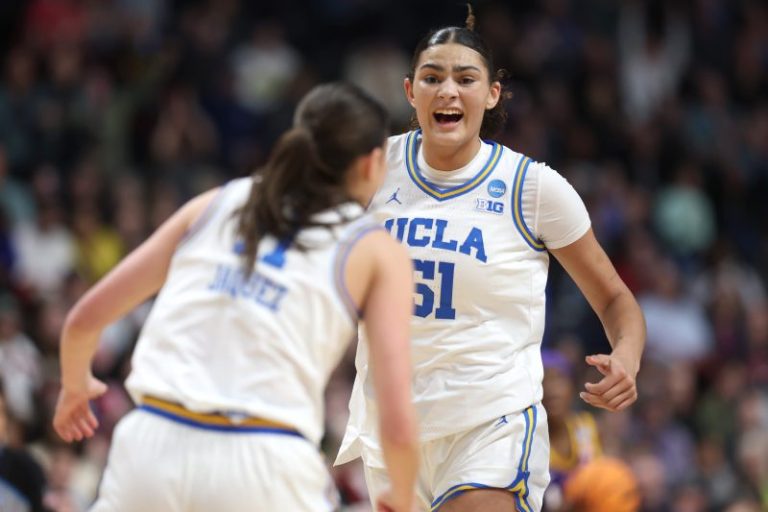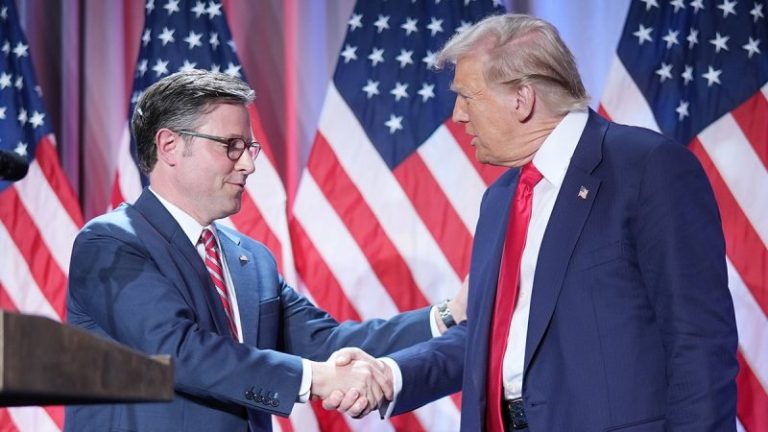CHARLOTTESVILLE, Va. — Rintaro Sasaki didn’t so much choose baseball as it chose him: Born to a legendary high school coach in Japan, gifted with a massive frame that generates prodigious power, and eventually addicted to the game like he was just another diamond junkie from Florida or Texas or California.
Yet as Sasaki passes the one-year anniversary of his arrival in the USA, perhaps his greatest trait is emerging in a game that demands, above all, a resolute response to challenges.
As Sasaki navigates his freshman season at Stanford, a pattern is emerging about a young man who seems determined to leave his comfort zone, to embrace the difficult and solve for the best way around an obstacle, with the confidence to know he’ll eventually arrive at his destination.
The most celebrated player on the traditionally powerful Cardinal is determined to fit in. He has no interpreter by his side, instead chipping away day by day, month by month at a language barrier that grows smaller with time. That growth can be felt with every sentence he speaks, his youthful exuberance wanting to the pour the words out even as his mind races to find the right ones.
It is no different in his vocation as a ballplayer, where the left-handed slugger unflinchingly embraces the role of a young star with the potential to disrupt baseball’s global ecosystem.
Sasaki, 19, is aiming to become the first player in Japan to forgo the pro draft, play collegiately in the U.S. and then launch a professional career through Major League Baseball’s draft – for which he’ll be eligible in 2026.
It is a move that toes the line between wise and audacious, given that, in a best-case scenario, he’d be a first-round pick and recipient of a seven-figure bonus shortly after his 21st birthday.
It’s also a mild subversion of agreements both official and gentlemanly between MLB and Nippon Professional Baseball, which are designed to prevent an utter harvesting of Asian talent and keep players with their NPB clubs at least a few seasons before testing their talent against the very best on the globe.
Yet as Sasaki put the finishing touches on a prep career that saw him hit a national record 140 home runs, his father Hiroshi, the legendary coach at Hanamaki Higashi High School, sat down to plot the best path forward.
Hiroshi Sasaki was the high school coach for both the great Shohei Ohtani as well as Los Angeles Angels left-hander Yusei Kikuchi. Both were posted by their NPB clubs and took the two traditional routes to MLB – Ohtani as an international free agent younger than 25 who was subject to a capped signing bonus, and Kikuchi as a veteran free to sign with the highest bidder.
As Hiroshi sat his son down on the precipice of adulthood, another path emerged: Go to the USA. Play for a baseball power and get an exceptional education, perhaps at Vanderbilt or UCLA. Leverage the power in his 6-feet, 270-pound frame and pierce the scouts’ ears with loud noises off his aluminum bat.
Sasaki listened and eventually settled on Stanford. The move meant leaving family behind and depriving his countrymen an up-close look at his development.
Yet once a decision is made, Sasaki does not hesitate.
“I don’t worry about that too much. I’m just doing it my way,” Sasaki told USA TODAY Sports during the Cardinal’s Atlantic Coast Conference series at Virginia. “I don’t care about how everybody might think about it.
“This is my life. This is my baseball life. We’re doing it my way. It’s a very nice time right now.”
As Stanford’s regular No. 3 hitter, Sasaki is getting an elite education at college baseball’s highest level – from experiencing both ends of walk-off emotions to the bonds with teammates growing stronger.
The freshman rollercoaster
There was little chance Sasaki would be awed by playing in the ACC, which along with the Southeastern Conference produced every participant in the 2024 College World Series.
He has played in front of crowds exceeding 40,000 in Japan, where the Koshien high school baseball tournament is a nationally-televised spectacle every summer. After enrolling at Stanford in April 2024, he played in the MLB draft league, where he hit four homers and posted a .783 OPS against competition roughly three years his senior.
So far? He’s certainly holding his own.
Sasaki has posted an .829 OPS, with a .298/.387/.442 line, ranks second on the Cardinal with 25 RBI and is tied for fourth with four home runs.
Yet he’s also learning about the grind like no other that is college baseball, especially in the era of extreme conference realignment.
Sasaki roared out of the gate with 28 hits in his first 78 at-bats, a .359 clip that included all four of his homers. The Cardinal, too, started strongly, racing out to a 16-3 that included taking two of three at traditional power North Carolina in Chapel Hill, and then sweeping Duke at home.xt
Sasaki ended the middle game of that series, crushing his second home run of the game, a three-run shot that run-ruled the Blue Devils. And the Cardinal climbed to No. 14 in the USA TODAY Sports college baseball coaches’ poll.
For now, that proved to be an apex for slugger and team. Sasaki fell into a 2-for-22 slide, during which the Cardinal got swept at home by Cal, then had to make their second cross-country trek for a conference series, this one at Virginia.
After the Cavaliers scored 24 runs to win the first two games, Stanford held leads of 4-0, 7-5 and 8-6 in the ninth inning of Saturday’s finale. That’s when a one-out, one-on grounder was scorched at Sasaki. The ball took a phantom hop over his head for a single.
Virginia tied it, walked it off in 10 innings and sent the Cardinal onward, a two-hour bus trip in the offing before they could fly back the next morning to the Bay Area.
Most power conference teams will play upward of 60 games, with College World Series participants approaching 70. While Sasaki’s high school club reached the quarterfinals and semifinals of the Koshien, this grind is new.
“There’s peaks and valleys,” says Stanford coach David Esquer, in his eighth season at the helm on The Farm. “It’s getting used to it over the long term. It won’t take him long before he’s got his feet fully on the ground and a little bit more consistent.
“Right now, it’s just typical freshman baseball: It’s hot and a little off and then they find it again.”
For Sasaki, the concept of a three-game series is a novelty, accustomed as he is to tournament play in Japan. The travel is certainly new and might be considered rigorous even for professionals: Between early March and mid-May, the Cardinal will make five trips to the Eastern time zone for conference series.
That’s as many East Coast swings that the neighboring – and well-compensated San Francisco Giants – will make over their 162-game season.
“We went to the ACC and we’re having a great time,” says Sasaki. “But it’s also so tough, traveling every single time. When the season started, we were doing very well, now not so good as a team. We did a good job, but we’re missing some little things.
“But we will come back soon. We will still keep working hard.”
‘He understands baseball’
When the Cardinal takes its show on the road, junior second baseman Jimmy Nati notices one thing when Sasaki takes batting practice: The opposing team is typically at their dugout railing, wanting the sensory experience of a Sasaki batting practice session.
“That speaks for itself,” says Nati. “The ball jumps off the bat. You don’t even have to be watching. You just hear it – it sounds a little different.”
Even when it doesn’t, Sasaki proves a quick study. After fouling a pair of balls into the batting cage’s netting, Esquer pauses his BP tosses and offers a word of advice. Sasaki deposits the next pitch over the pavilion in right field at Disharoon Park. The next leaves the yard just to the left of dead center field.
A few pitches later, a Stanford assistant shouts words of advice. “’Taro! Top hand!” A couple swings later, the balls once again fly over the wall.
That raw power is certainly Sasaki’s lane into the major leagues. His exit velocity was measured as high as 108 mph during his stint as an 18-year-old in the MLB draft league. He moves particularly well for his size at first base and would not hurt a team there defensively.
While MLB has banned the shift in the big leagues, collegiate opponents have no such restriction and treat Sasaki like David Ortiz, playing their second baseman in shallow right field and the third baseman where the shortstop would normally be. Respect.
Scouts who have watched Sasaki on multiple occasions say their main concern is his lack of projectability – that what they see now is likely close to what his finished, professional tool kit will resemble.
Yet there is never a ceiling on baseball growth, and as the son of a decorated coach, Sasaki is working from a strong baseline.
“He understands the game,” says Esquer. “Early on, there may have been a little bit of a language barrier, but there’s no baseball language barrier. He understands baseball.”
Most of that is by design, but a little osmosis couldn’t hurt.
Ohtani has spoken admirably about Sasaki’s swing, and while Sasaki won’t ever stand eye-to-eye with the 6-foot-4 Ohtani, at least he can hit the ball nearly as hard as him now. Yeah, a lot has changed since an 8-year-old Sasaki was in the two-way talent’s orbit when Ohtani was a high school phenom.
“I just remember I met him and took a picture with him,” remembers Sasaki.
“He was very tall.”
Sasaki’s more lucid memories involve early mornings or late nights working out with Hiroshi, getting in swings in between his father’s coaching duties.
“As a child, we practiced every single day, when I was a child, when I was in high school,” says Sasaki. “He taught me a lot of baseball stuff growing up. Baseball skills and also how we live life. He was very important, my dad.”
Yet Hiroshi and Reika, Rintaro’s mother, aren’t around now to fill in the life gaps, with Hiroshi still busy with his high school coaching season. It seems Rintaro is handling that piece of it quite well on his own.
Loose and athletic
A borderline pitch just off the outside corner is called a ball, and the partisan road crowd roars its disapproval. Sasaki turns toward the Stanford dugout, a slight grin creasing his face.
A tight situation will emerge in the field, and Sasaki gestures toward Mati at second base, getting his attention and using his glove to shield his face.
And then he will stick his tongue out.
“There was a language barrier there at first, a little shy as you would be in a new country, a new college,” says Mati, who joined Stanford straight from Australia and has been a sounding board for Sasaki. “It took him a few weeks. And then when he came out of his shell, he’s hilarious. He’s an unbelievable teammate. I just have so much fun with him.
“Even when things are going bad, he turns to me and says, ‘Stay positive!’ and sticks his tongue out and just continues to have fun. It’s pretty cool to see how mature he is, even as a freshman.”
Esquer was nearly as impressed with Sasaki’s second-quarter report card as he is his prodigious power, given Stanford’s academic rigor and all that’s on Sasaki’s plate.
“A hard worker, so good-natured,” says Esquer. “The one that sticks out to me is, just great team spirit. Just really loves playing with the team and being around his teammates.
“He’s such a positive force, team-wise. He’s a hard worker who sets a high standard no matter what he does. That part of it – not knowing what that adjustment is going to be like as far as the classroom work and baseball and the lifestyle – he’s done great.”
Sasaki soon turns 20 years old and will be draft-eligible upon his 21st birthday. Baseball America ranks him 19th among collegiate prospects eligible for the 2026 draft; Esquer says Sasaki’s game is “tracking to be at the highest level before he’s out of here,” noting that “365 days does a lot for you.
“There’s no trick to it or shortcut – it’s just putting in the hours, growing and maturing.”
For now, Sasaki is enjoying relative anonymity as a collegian, even as his countrymen seek him out at games and pay their respects, one coast to the next. Perhaps in just a few years, he’ll command headlines back home the way Ohtani does, the way Ichiro Suzuki did before him.
Year 1 in the USA is now in the books. The path no one foresaw has opened up nicely, thanks to a father’s foresight and a teenager’s adaptability.
“It’s been a great time,” says Sasaki. “Having fun, even outside baseball. Having a very good time.
“I appreciate playing right now. And getting a great experience and a great opportunity.”
The USA TODAY app gets you to the heart of the news — fast. Download for award-winning coverage, crosswords, audio storytelling, the eNewspaper and more.
This post appeared first on USA TODAY










